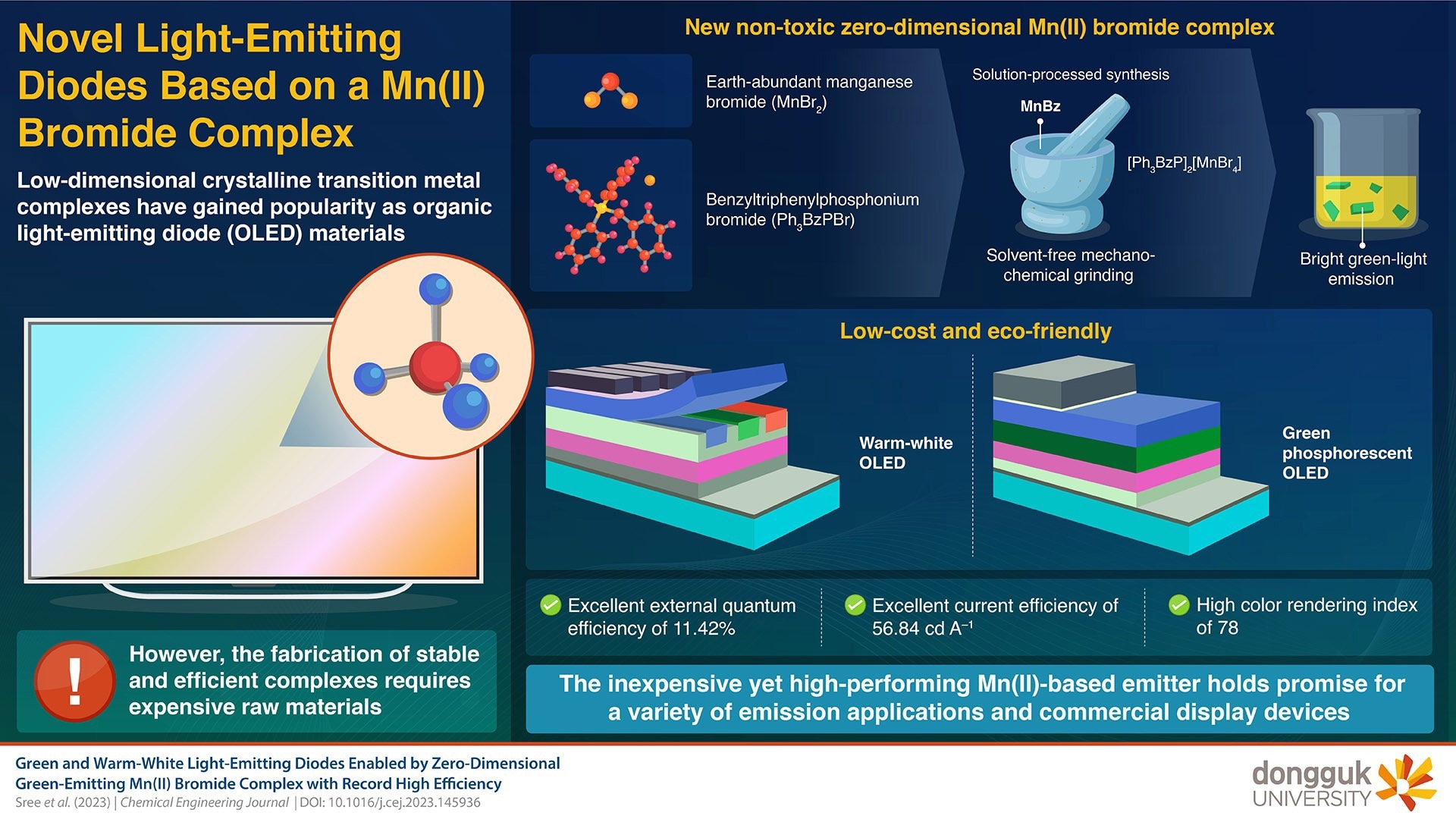Scientists at Dongguk University have developed a new environmentally friendly and cost-effective bright green light-emitting manganese complex called MnBz for organic light-emitting diodes (OLEDs). The material was used to fabricate a first-of-its-kind Mn-based white OLED device and a green OLED device with record high efficiency.

Image Credit: Dongguk University
Organic light-emitting diodes (OLEDs) are considered new and promising light sources for illuminating digital displays and indoor/outdoor spaces. One of the most popular commercial methods for fabricating OLEDs is the solution processing approach. However, while the fabrication process of such LEDs itself is low-cost and simple, the raw materials used during solution process often include precious and expensive metals such as rare earth metals, driving up the fabrication costs.
Studies have shown that low-dimensional complexes of earth-abundant transition metals could be the key to solving this problem. To develop a promising solution using this approach, a team of researchers led by Assistant Professor Vijaya Gopalan Sree from Dongguk University recently attempted to synthesize zero-dimensional manganese (Mn)-based complexes for OLEDs via solution processing. In their recent breakthrough made available online on 7 September 2023 and published in Volume 474 of the Chemical Engineering Journal on 15 October 2023, the team has laid out the strategy for fabricating a bright green-light-emitting Mn (II) complex MnBz, which was further utilized to design a first-of-its-kind warm-white OLED device.
"Replacing expensive rare earth metals like gold and platinum with crystalline earth-abundant transition metal complexes can help achieve lightning solutions or displays that are cheaper yet bright and vibrant,” says Dr. Sree, talking about their motivation to explore new materials for OLEDs.
In this study, the researchers synthesized MnBz by subjecting manganese bromide (MnBr2) and benzyltriphenylphosphonium bromide (Ph3BzPBr) to solvent-free grinding, followed by dissolution in acetonitrile solvent. The resulting solution was slowly evaporated over days to obtain single crystals of MnBz. The thus obtained MnBz exhibited bright green-light emissions with a narrow emission spectrum and high quantum yield.
The team then used the single crystals of MnBz to design a novel Mn(II) complex-based warm-white light-emitting device, which exhibited an excellent color rendering index (CRI) of 78. MnBz was also used to design a green phosphorescent OLED device, which exhibited excellent performance. These light emitters displayed a record-breaking quantum efficiency of 11.42% and current efficiency of 56.84 cd A-1.
The exceptional brightness of these MnBz-based devices in response to low turn-on voltages can pave the way for energy-efficient OLED-based consumer electronics and lighting systems. Explaining further, Dr. Sree adds, “Our new eco-friendly and cost-effective light emitter can facilitate developments towards a wider adoption of OLEDs and ultimately impact people's lives by transforming the way we interact with and illuminate our world.”